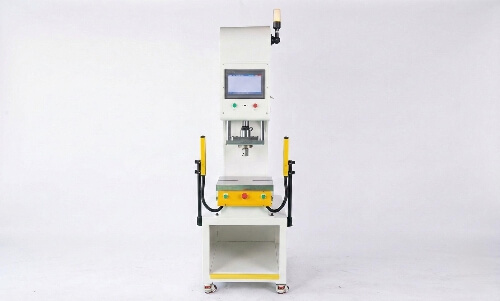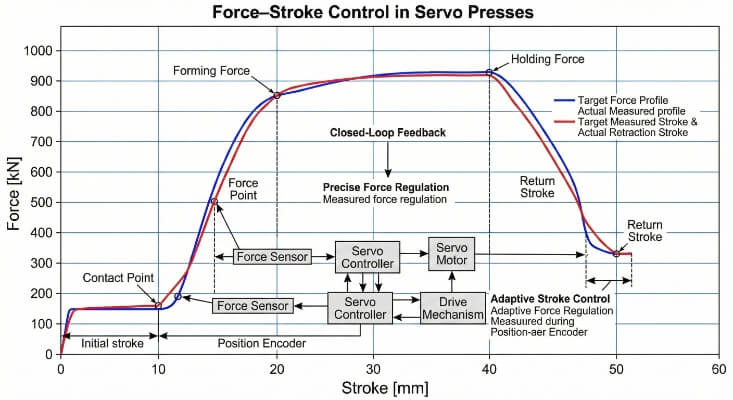Stainless steel machining presents unique challenges. Many manufacturers struggle with its toughness and tendency to work hard. This can lead to slower production, increased tool wear, and higher costs. But fear not – with the proper techniques, stainless steel can be expertly machined into precise, durable parts.
Stainless steel machining involves shaping and cutting stainless steel using specialized tools and equipment. It involves techniques like milling, turning, drilling, and grinding to create precise components. This method is crucial for industries requiring corrosion-resistant, high-strength parts.
Curious about the specifics of stainless steel machining? Let’s explore the key aspects that make this process both challenging and rewarding.
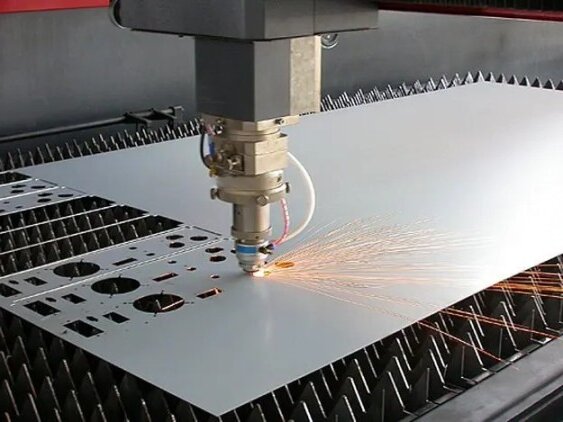
Understanding Stainless Steel
Types of Stainless Steel
Stainless steel comes in various types, each with unique properties:
- Austenitic Stainless Steels: These are non-magnetic and highly resistant to corrosion. They’re widely used in kitchenware and chemical processing equipment.
- Ferritic Stainless Steels: Known for their magnetic properties, they offer good corrosion resistance. They’re often found in automotive exhaust systems.
- Martensitic Stainless Steels: These steels can be hardened through heat treatment. They’re commonly used in knife blades and surgical instruments.
- Duplex Stainless Steels: Combining austenitic and ferritic structures, they provide excellent strength and corrosion resistance. They’re ideal for marine environments.
- Precipitation-hardened Stainless Steels: These offer high strength and toughness. They’re used in aerospace and high-performance applications.
Properties Relevant to Stainless Steel Machining
When machining stainless steel, we consider several fundamental properties:
- Hardness: This affects tool wear and machining difficulty. Harder steels require specialized cutting tools and techniques.
- Corrosion Resistance: While beneficial for the final product, this property can make chip formation challenging during machining.
- Work Hardening Capabilities: Some stainless steels harden as they work, impacting tool life and surface finish.
Understanding these properties helps us choose the right machining approach for each type of stainless steel.
Stainless Steel Machining Techniques
We use various techniques to machine stainless steel effectively:
Milling
Milling removes material using rotating cutting tools. It’s versatile and precise, creating complex geometries and flat surfaces. We use various milling strategies to achieve different finishes and shapes.
Turning
Turning involves rotating the workpiece while a cutting tool removes material. It’s ideal for creating cylindrical parts like shafts or bolts. We can achieve tight tolerances and smooth finishes with proper turning techniques.
Drilling
Drilling creates holes in stainless steel components. Special drill bits and coolants are required to prevent overheating. We carefully control speed and feed rates to ensure clean, accurate holes.
Laser Cutting
Laser cutting uses a high-powered laser to melt and vaporize stainless steel. It’s excellent for intricate designs and quick prototyping. We can achieve clean cuts with minimal heat-affected zones.
Grinding
Grinding refines surfaces to achieve tight tolerances and smooth finishes. It’s crucial for parts requiring high precision. We use specialized abrasive wheels and coolants for optimal results.
EDM (Electrical Discharge Machining)
EDM uses electrical discharges to remove material. It’s perfect for complex shapes and hard-to-machine areas. We often use EDM to create precise holes or intricate cavities in stainless steel parts.
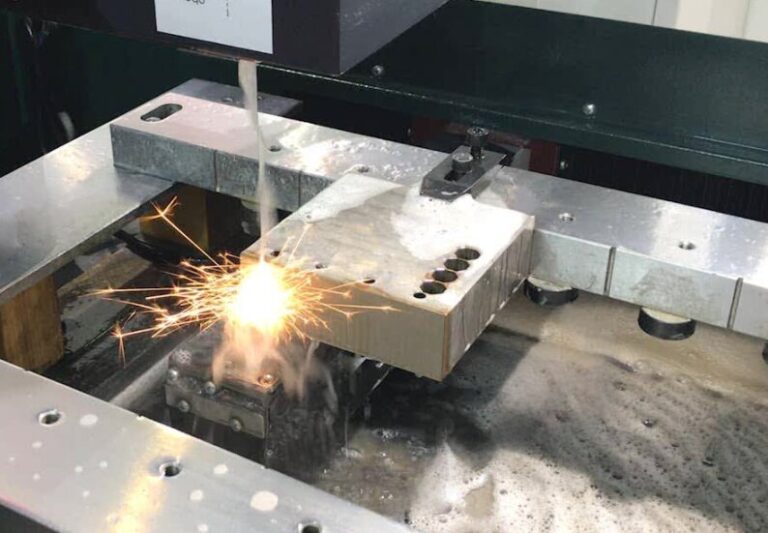
Stainless Steel Machining: Pros and Cons
Let’s explore the advantages and challenges of stainless steel machining:
Pros
- Corrosion Resistance: Machined stainless steel parts resist rust and chemical corrosion. They maintain their appearance and function in harsh environments.
- Durability: Stainless steel components have excellent strength-to-weight ratios. They withstand wear and tear, making them ideal for long-lasting applications.
- Aesthetic Appeal: Machined stainless steel parts often have a sleek, modern look. They can be polished to a high shine or given various surface finishes.
- Hygienic Properties: Stainless steel is easy to clean and sanitize. It’s perfect for food processing and medical equipment.
- Versatility: We can machine stainless steel into various shapes and sizes. It suits many industries and applications.
Cons
- Cost: Stainless steel can be more expensive than other metals. Machining it often requires specialized tools, adding to the overall cost.
- Machining Difficulty: Stainless steel’s hardness and work-hardening properties can make it challenging to machine. It may require more time and skill.
- Tool Wear: The material’s toughness can cause rapid tool wear. We need to replace cutting tools more frequently, impacting production costs.
- Heat Generation: Machining stainless steel generates significant heat. This can affect part accuracy and require careful cooling strategies.
- Material Waste: Some machining processes can produce significant material waste. This increases costs and environmental impact.
Tips for Machining Stainless Steel
Opt for high-quality materials.
We always choose high-grade stainless steel for machining. Quality materials ensure better machinability and superior end products. They reduce the risk of defects and improve overall efficiency.
Add coolant
Proper cooling is crucial when machining stainless steel. We use high-pressure coolants to manage heat and prevent work hardening. This helps maintain part accuracy and extends tool life.
Use Sharp Tooling
Sharp, durable cutting tools are essential for stainless steel machining. We regularly replace or resharpen tools to maintain optimal cutting performance. This reduces friction and improves surface finish.
Lubricants
The correct lubricants can significantly improve stainless steel machining. We use specialized cutting fluids to reduce friction and heat. This helps achieve better surface finishes and extends tool life.
Cutting Parameters
Optimizing cutting speed, feed rate, and depth of cut is crucial. We carefully adjust these parameters based on the specific stainless steel grade. This ensures efficient material removal while minimizing tool wear and heat generation.
Challenges and Solutions
Work Hardening
Challenge: Some stainless steels harden as we machine them, making further cutting difficult.
Solution: We use sharp tools and maintain consistent cutting pressure. Adjusting feed rates and cutting speeds helps minimize work hardening. We sometimes employ specialized cutting strategies to manage this issue effectively.
Surface Finish Issues
Challenge: Achieving a smooth surface can be tricky due to the material’s properties.
Solution: We select appropriate cutting tools and optimize cutting parameters. Using the proper coolants and lubricants aids in achieving better finishes. We often employ secondary finishing processes like polishing or lapping for ultra-smooth surfaces.
Cost-Effectiveness
Challenge: Stainless steel machining can be expensive due to material costs and tool wear.
Solution: We implement efficient machining strategies to reduce material waste. Investing in high-quality tools and optimizing cutting parameters helps extend tool life. We consider automation to increase efficiency and reduce labor costs for large production runs.
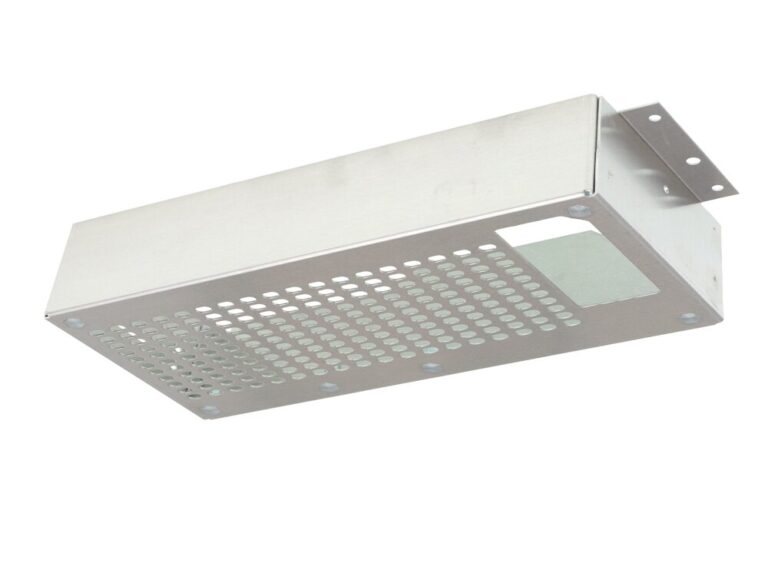
Optimizing Production
Workflow Efficiency
We focus on streamlining our stainless steel machining processes for maximum efficiency.
Lean Manufacturing Principles: We apply lean techniques to reduce waste and improve productivity. This includes optimizing shop floor layouts and implementing just-in-time production methods.
Automation in Machining Processes: We integrate CNC machines and robotic systems where appropriate. This boosts consistency and allows for 24/7 operation on suitable projects.
Quality Control
Maintaining high quality is crucial in stainless steel machining.
Standards and Certifications: We adhere to industry standards like ISO 9001. Our processes meet or exceed relevant certifications for various industries.
Testing and Validation Techniques: We use advanced measurement tools and techniques. This includes coordinate measuring machines (CMMs) and non-destructive testing methods to ensure part accuracy and integrity.
We consistently deliver superior stainless steel machined parts by focusing on efficiency and quality.
Conclusion
Stainless steel machining offers possibilities for creating durable, corrosion-resistant parts. It combines precision with versatility, allowing for the production of components that excel in challenging environments.
While it presents unique challenges, proper techniques and tools make stainless steel machining highly rewarding. By understanding the material properties and employing the right strategies, we can harness the full potential of stainless steel machining.
Contact us today to discover how we can achieve exceptional results for your projects. You can also request a quote, and we’ll work with you to find a customized, budget-friendly solution!
FAQs
What are the primary challenges in stainless steel machining?
The main challenges include work hardening, heat generation, and tool wear. We manage these issues through proper cooling, sharp tooling, and optimized cutting parameters.
How does stainless steel’s hardness impact tool wear?
Harder stainless steels cause faster tool wear. We use high-quality, wear-resistant tools and adjust cutting speeds to extend tool life and maintain precision.
Is Stainless Steel Difficult to Machine?
Stainless steel can be challenging to machine due to its toughness and work-hardening properties. However, with the proper techniques and tools, we achieve excellent results.
How does the choice of stainless steel type affect the machining process?
Different stainless steel types have varying properties. We adjust our machining approach based on the specific grade, considering hardness, work-hardening tendency, and thermal conductivity.
What is the best machinability of stainless steel?
Free-machining grades like 303 and 416 offer the best machinability. These contain additives that improve chip breaking and reduce tool wear, making them easier to machine. However, these grades may have slightly lower corrosion resistance than other types.
Hey, I'm Kevin Lee

For the past 10 years, I’ve been immersed in various forms of sheet metal fabrication, sharing cool insights here from my experiences across diverse workshops.
Get in touch

Kevin Lee
I have over ten years of professional experience in sheet metal fabrication, specializing in laser cutting, bending, welding, and surface treatment techniques. As the Technical Director at Shengen, I am committed to solving complex manufacturing challenges and driving innovation and quality in each project.

